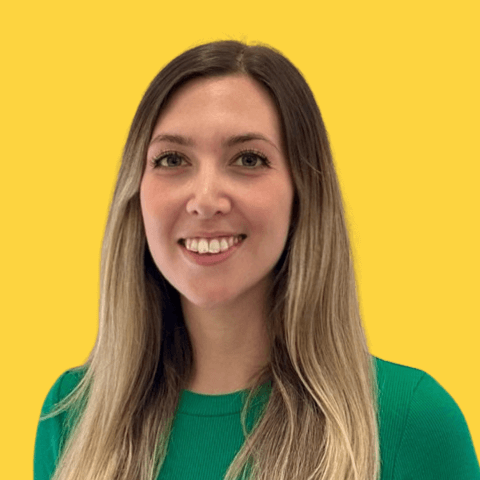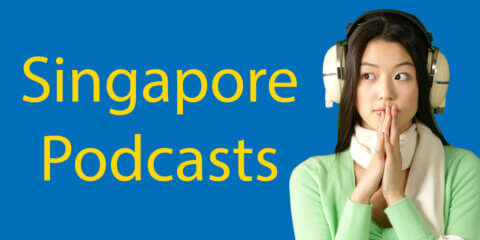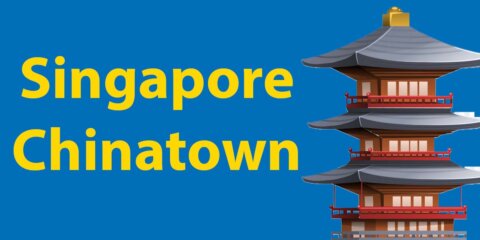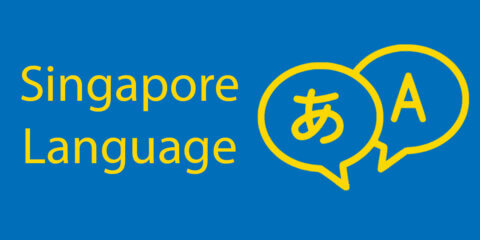Singapore History 101
Welcome to the LTL guide to the history of Singapore.
Learning about Singapore history is an enjoyable thing to do, especially while in Singapore.
There are loads of Museums to explore, historical sites to visit and Singaporeans who are more than happy to share their knowledge.
🌏 If you’re into Asian history and culture, why not take it a step further? Our Winter Camp Japan and Winter Camp Korea programs are perfect for kids and teens eager to learn languages and discover rich traditions across Asia, from samurai castles in Japan to royal palaces in Seoul.
Fun Fact: Singapore gained independence in 1965, meaning if you talk to a Singaporean born before 1965, you’re talking to someone who has seen the entirety of modern independent Singapore.
This fact occurred to me while talking to a taxi driver who was delighted to share all the enormous growth he had seen in Singapore in his lifetime. Not just economically but physically, 25% of the country today is reclaimed land!
The best illustration of the physical growth in Singapore History is to stand outside the Raffles Hotel on Beach Road. Raffles Hotel was originally a privately owned beach house.
Hint: It’s no longer that close to a beach.
We’ll get more into Raffles Hotel and Sir Thomas Stamford Bingley Raffles and his significance in Singapore History.
Discover more about Raffles Hotel and the notorious Singapore Sling.
Here’s a break down of the periods of Singapore History:

A Complete Guide to Living in Singapore (for 2024)
We’re here to shed some light on everything there is to know about living in Singapore. Food, friends, culture, sightseeing, shopping and more.
History of Singapore Before 1819
Looking back in Singapore history, two hundred years ago, Singapore was not much more than a tropical jungle and was barely inhabited. However, that doesn’t mean there was nothing and no one!
The earliest know Singapore history records of Singapore are 3rd-century Chinese inscriptions referring to the island as the “island at the end of a peninsula”, which is an accurate description of where Singapore is on the continent of Asia.
In 1025 the region was occupied by Rajendra Chola I a Tamil emperor from Southen India. However, there is no evidence to suggest Rajendra I or his armies visited what is today Singapore.
Then came a reign of 5 kings.
- 1299–1347 Sang Nila Utama (Sri Tri Buana)
- 1347–1362 Sri Wikrama Wira
- 1362–1375 Sri Rana Wikrama
- 1375–1389 Sri Maharaja
- 1389–1398 Parameswara (Iskandar Shah)
According to legend Sang Nila Utama (Sri Tri Buana), a Prince from Palembang (what is today a city in Indonesia) was the founder of the Kingdom of Singapura in 1299.

He took refuge on the island during a storm. While hunting, he spotted a lion which he interpreted as a good omen and decided to build a city there and call it Lion City (Singa + Pura).
His Kingdom lasted 99 years for four more generations.
Historians debate the account of his life of Sang Nila Utama. Hence it is referred to as ‘a legend’ of Singapore. Historian’s confusion starts with the fact there were never any lions in Singapore!
Despite this, the legend is embraced by Singapore as seen in the iconic mythical creature the ‘merlion’ which pays tribute to the founder’s story of sighing a ‘lion’ and ‘mer’ representing the sea, paying homage to Singapore’s origin as a fishing village.
During the 13th century, the Majapahit Empire in the south (1293 – 1527) and the Kingdom of Ayutthaya (1251 – 1767) in the north both claimed Singapore as their own and attacked in 1330, 1350 and 1398.
The final strike in 1398 was successful, and the city was burnt to the ground.
Iskandar Shah was the last king in Singapore history. He ruled between 1389 to 1398. His defeat is attributed to Sang Rajuna Tapa a betrayal by one of his royal ministers.
Sang’s daughter was one of Shah’s concubines, Shah had accused her of adultery and punished her by stripping her naked in public.
Sang pledging his support to The Majapahit Empire a Hindu-Buddist empire from the island of Jave (part of modern-day Indonesia) and in 1398, Majapahit dispatched a fleet of warships, carrying no less than 200,000 men.
Sang Rajuna Tapa opened the gats to the invaders, and the city was burnt to the ground.
Iskandar Shah fled north during the invasion by The Majapahit Empire and established a new settlement in what is today known as Malacca City in Malaysia.
During the reign of these five kings, Singapura became a prosperous trading city. There is archaeological evidence of imported Chinese ceramics as well as other products from around Asia during this period.
Wang Dayuan, a Chinese trader who visited Singapore in the early 1300s, documented some of the most useful information we have of Singapore during this period.
Singapore would soon be incorporated into the Muslim empire of Malacca.
Malacca began to decline in 1511 when the Portuguese established themselves as the dominant trading and military force in the region.
In 1613 the Portuguese burnt down Singapore, and the island remained mostly uninhabited for 200 years.
Enter: Sir Thomas Stamford Bingley Raffles.
Singapore History: 19th Century
In January 1819 Sir Thomas Raffles of the East English India Trading Company was looking to establish a trading site in the region.
Raffles brokered a deal with Sultan Hussein of Johor and East English India Trading Company for ownership of the island of Singapore.
In 1826 Singapore was linked with Malacca and Penang in The Straits Settlements a name for British territories located in Southeast and East Asia.

Discover more about The Straits Settlements in our Singapore Money blog.
The free trade and free enterprise Raffles put in place attracted massive amounts of maritime traffic and migration.
The first census in Singapore history took place in 1824 and recorded a total of 10,683 residents comprising of:
https://eresources.nlb.gov.sg/history/events/2fb8948b-5f16-4a7a-8e3c-7a724e1eb6ad
- 4580 Malays
- 3317 Chinese
- 1925 Bugis
- 756 Indians
- 74 Europeans
- 16 Armenians
- 15 Arabs
Singapore’s population went from 0 to 10’000 within its first five years to well over 100’000 within 50 years.
In 1867 Singapore became a crown colony of the British Empire. With this came the rule of British law which stamped out much of the alcohol, opium and prostitution going on.
The city received a facelift with public buildings, a new police force and other institutions were established.
At this point in Singapore history, the city was flourishing, and immigration was on the rise, especially from China. 1/4 new immigrants were Chinese, and the remaining 1/4 were coming from Malaysia or India.
Most of Singapore’s people felt a close connection with the British Empire. However, this sentiment would change in WW2 when Japan invaded, and Singapore was unable to receive reinforcements from Brittan, who was battling Germany.
Singapore History: 20th Century
Singapore endured a three and half year occupation by Japan between the 15 February 1942 and 14 August 1945. In 1945 it was restored as a British colony, but things would never be the same again.
In 1946 The Straits Settlements was fully dissolved, and Singapore became a crown colony.
In the following years were troublesome in Singapore history, there were several strikes causing disruption in Singapore’s public transport, public services and its port.
Soon there was malnutrition, diseases and outbreaks of crime throughout the city.
In 1959 Singapore became a ‘self-governing’ state still within the British Empire and Lee Kuan Yew became the first long-standing Prime Minister of Singapore.
In 1963 Singapore left the British Empire to become a state of Malaysia but was kicked out in 1965.
That’s right! They didn’t leave, Singapore was expelled!
Considering the enormous economy and strategic shipping port, it is today it’s hard to imagine letting it go. However, you need to consider what was happening in Singapore history at the time.
The reasons were due to Singapore’s large Chinese ethnic groups that had political ideologies conflicting with the party in power Malaysia.
Fearing the large voting block of ethnically Chinese, the Malaysian Solidarity Convention let by Tunka Abdul Rahman, who represented Malaysia largest ethnic group was under threat of losing power by the large voting block of the People’s Action Party led by Lee Kuan Yew.
After lengthy negotiations, it was agreed that Singapore and Malaysia’s merge was unnecessary and Singapore should run as an independent city-state.
Lee Kuan Yew will forever be known in Singapore history as the founding father of modern-day Singapore. He served as the first Prime Minister from 1959 to 1990 and made Singapore a first world country in a single generation!
The policies Lee Kuan Yew put in place and still standing the test of time today. He made a nation with low corruption, low taxes, excellent social services including schools which made Singaporean’s some of the best-educated people in the world.
For these reasons and more, Singapore has a thriving economy, is considered one of the best places live, to do business, trade, get an education, travel, and so much more.
Did you enjoy this rundown of Singapore history?

Singapore Money
Check out all the cool and colourful Money in Singapore.
Singapore Language
Learn about all languages spoken in Singapore.


Facts about Singapore
100 mind blowing facts about Singapore.
Singapore History – FAQ’s
When did Singapore become a British colony?
Singapore became part of East English India Trading Company in 1819 which was later classified a ‘Crown Colony’ owned by the British Empire in 1867 Singapore was occupied by Japan during WW2 and was returned after the defeat of Japan.
Was Singapore part of Malaysia?
Yes, Singapore has technically been a part of Malaysia on and off throughout history as an island of little significance due to its poor resources.
After becoming a British colony once more after WWII it became a Malaysian state in 1963 and then gained independence as a city-state in 1965.
When did Singapore gain independence?
Singapore became an independent republic on 9 August 1965. You’ll enjoy quite a show in Singapore should you be here on their independence day!
What was Singapore like before Raffles?
Singapore would have been an isolated island before Sir Thomas Stamford Bingley Raffles. Passing fishing and merchant boats would have passed Singapore and possibly gone ashore, but there would have been little to no permanent inhabitants in the 200 years before his arrival.
Want More From LTL?
If you wish to hear more from LTL Mandarin School, why not join our mailing list. We give plenty of handy information on learning Chinese, useful apps to learn the language and everything going on at our LTL schools! Sign up below and become part of our ever-growing community!


 Hi, my name is Greta. I am from Italy and I work as a student advisor. Please contact me if you wish to come and study with us!
Hi, my name is Greta. I am from Italy and I work as a student advisor. Please contact me if you wish to come and study with us!







1 comments
I did not know there were people in Singapore before Raffles!?